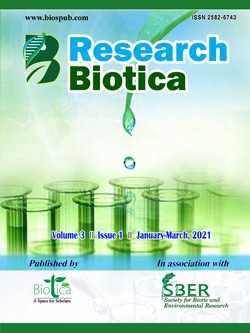
Characterization of Newly Developed Crease Resistant and High Drape Soft Silk Fabrics and Confirmation of Chemical Changes using Raman Spectroscopy
G. Hariraj*
Central Silk Technological Research Institute, Central Silk Board, Ministry of Textiles, Govt. of India, BTM Layout, Bengaluru, Karnataka (560 068), India
K.M.A. Kadhar
Central Silk Technological Research Institute, Central Silk Board, Ministry of Textiles, Govt. of India, BTM Layout, Bengaluru, Karnataka (560 068), India
K. Geetanjali
Central Silk Technological Research Institute, Central Silk Board, Ministry of Textiles, Govt. of India, BTM Layout, Bengaluru, Karnataka (560 068), India
Subhas V. Naik
Central Silk Technological Research Institute, Central Silk Board, Ministry of Textiles, Govt. of India, BTM Layout, Bengaluru, Karnataka (560 068), India
DOI: https://doi.org/10.54083/ResBio/3.1.2021.63-68
Keywords: Chemical treatment, Degumming, Raman spectroscopy, Silk industry, Soft silk fabrics
Abstract
Soft silk fabrics are extensively used for the production of dress materials and soft sarees. The perennial problem in soft silk fabrics is the wrinkle and drape ability problems. CSTRI has developed new technology for the production of wrinkle resistant and high drape degummed soft silk fabrics using chemical treatment. In the earlier studies the suitability of the chemical has been confirmed for the improvement of softness of fabrics and standardized the processing conditions. In the present study influence of chemical concentration at different temperatures and duration of treatment were studied. It was found that higher the temperature of treatment the chemical reaction was effective and the fabrics have shown improved drapeability and wrinkle resistant. In order to study the chemical modification on the fabrics, the untreated and untreated at different temperatures were studied for Raman spectroscopy. The Raman spectroscopy data has been analyzed and it could be observed that the chemical treatment at 60 ºC and 75 ºC has shown shift at 1225 and 1650 wave number, which may be attributed to tertiary level molecular structure change in amide I and amide III level due to chemical treatment. Thus the study indicate that using the chemical treatment at high temperatures, the degummed soft silk fabrics could be improved to have better crease recovery, drape, Flexural rigidity and tensile characteristics.
Downloads
not found
Reference
Abdul Kadhar, K.M., Hariraj, G., Roy, S., Somashekar, T.H., 2008. Studies on degumming of Indian bivoltine silk. Journal of Silk Science and Technology of Japan (Nippon Silk Gakkaishi) 17, 43-49.
Abdul Kadhar, K.M., Hariraj, G., Roy, S., Somashekar, T.H., 2009. Studies on degumming and dyeing methods of Indian bivoltine and multibivoltine silk. Asian Dyer 6(4), 47-52.
Bureau of Indian Standards (IS 6936), 1984. Physical method of test (TXD 1), Published by BIS, India. pp. 4-15.
Hariraj, G., Ghosh, M.K., 2015. Standardization of process parameters for imparting bulkiness to bivoltine raw silk by chemical treatment using box and behnken experimental methodology. Journal of Silk Science and Technology of Japan (Nippon Silk Gakkaishi) 23, 11-16.
Hariraj, G., Mahadevaiah, B.M., Singh, A.K., Khatton, J., 2017. Standardization of process parameters for improving the bulkiness of fabrics by chemical treatment using Box and Behnken experimental methodology. Sericologia 57(4), 207-211.
Ikegami, N., Bamba, R., Kobayashi, K., 1998. Development of bulkiness by salt shrinkage treatment, Part 1. Report of the Tokyo Metropolitan Textile Research Institute 46, 86-87.
Ikegami, N., Bamba, R., Kobayashi, K., 1998. Development of bulkiness by salt shrinkage treatment, Part 2. Report of the Tokyo Metropolitan Textile Research Institute 47, 78-79.
Paul, S., Kang, J., Seol, D., Yang, H., Lee, J., Ahn, Y., Han, S., Kim, J., 2010. Effect of the calcium nitrate treatment on the tensile, bending, shear properties of silk fabric. Journal of Fashion Business 14(6), 39-52.
